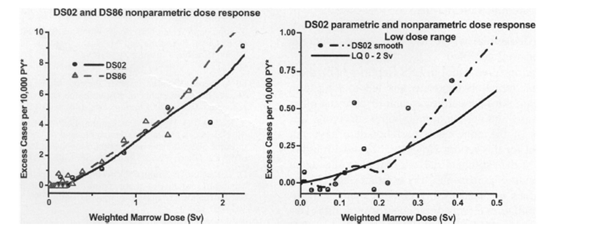Off the coast of North Devon in UK there is to be built the Atlantic Array, a 238 square kilometre wind farm. The number of turbines will be 278 and will vary in height from about 180m to about 220m. The estimated power rating is 1500MegaWatts (MW). However power is not what matters; what matters is energy which is measured domestically in kWh – a kilowatt running for one hour.
Because of varying winds, the Array will have a Capacity Factor of about 34%, so energy production will be about 1500*24*365*0.34MWh per annum, approximately 4500GWh. Because of variability of power output, from zero to 1500MW, backup generation will be required in the system. Two modern gas fired 750MW generators would be required. On average they would run for two thirds of the time.
Upstream from the Array on the West Somerset coast is Hinkley Point, the site of nuclear power stations. Hinkley A operated from 1965 to 2000. Hinkley B started producing electricity in 1976, is still operative but due to close in 2016. One of the new nuclear power stations that are to be built in UK with both Conservative and Labour support in parliament, is Hinkley C. It will be rated at 3260MW. Power output will decline somewhat over time so I will assume that on average it only runs at 2900MW (but constantly); so energy output per annum will be roughly 2900*24*365 MWh: roughly 25000GWh. So the wind farm will produce less than one fifth of the energy produced by Hinkley C.
Advertisement
There are three sorts of power stations: base load that provide the main energy used but are inflexible; fossil fuels and nuclear are the main examples. Secondly there are peak load stations that can be brought on line very quickly. Examples are hydro and gas turbines. Thirdly there are stations that produce energy at times beyond human control; examples are wind and solar. In the absence of large and efficient storage systems, energy that is produced at the whim of nature is far less useful than either base or peaking power. In terms of usefulness Hinkley C beats Atlantic Array hands down.
But, what about radiation risks, Chernobyl, Fukushima, Three Mile Island, Hiroshima and Nagasaki? The general question is: 'how dangerous is ionising radiation?' The sharpened question becomes 'is there is any level of radiation that is not dangerous?'
The most commonly held view of radiation risks is the long accepted Linear No Threshold (LNT) theory which states that risk increases proportionately to total dose received, that risk is never zero and hence that all extra radiation, no matter how small, is dangerous. 'Academic' papers on radiation risk have a strong predilection for managing to put a sort of line of best fit through the data points. Apart from LNT a combination called 'Linear Quadratic' is sometimes used.
The paper Effect of Recent Changes in Atomic Bomb Survivor Dosimetry on Cancer Mortality Risk Estimates by Preston et al of the Departments of Statistics and Epidemiology, Radiation Effects Research Foundation, Hiroshima, discusses the effects of the official changes to methods of assessing radiation doses experienced by survivors from the Hiroshima/Nagasaki bombs. Those effects are shown graphically as shown below.

Both show Excess Cases per 10,000 people against Dose received in Sieverts Sv. In the left hand graph the congestion of data points at low doses is noticeable. The right hand graph for 'low dose range' shows more detail. I would assert that it is not possible to put any reasonable line of any shape at all through the points at doses below about 0.1 Sv. The inevitable error bars in all of the measurements compounds that assertion. The smooth graph LQ (linear quadratic 0-2 Sv) shows a determination to make the data fit a model, a model that was adduced from a much wider Dose range. The DSO2 graph highlights the futility of looking for a simple (or complex) mathematical model.
Advertisement
However the data points shown do not support the No Threshold theory. It seems highly unlikely that any level below 0.1 Sv was harmful.
Since the war safety limits for radiation have been drastically lowered. The twin pillars are ALARA (As Low As Reasonably Achievable) and LNT (Linear no Threshold) mentioned earlier. They are interconnected because if there is a 'threshold' level of radiation below which there are no adverse effects, there is no need for radiation levels to be kept below that level: ALARA becomes an expensive futility.
Since nuclear power/radiation issues first became significant there have been major improvements in our understanding of the effects of radiation on humans. Examples are in the use of radiation for diagnostic purposes and in its use for cancer treatments. Long term examinations of the consequences of inadvertent 'experiments' have been done for Chernobyl, Hiroshima/Nagasaki and painters of luminous watch hands. These have provided high quality data and risk analyses.
Discuss in our Forums
See what other readers are saying about this article!
Click here to read & post comments.
14 posts so far.